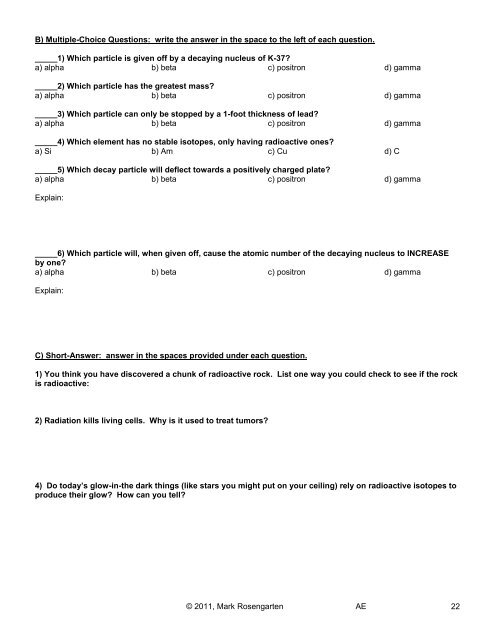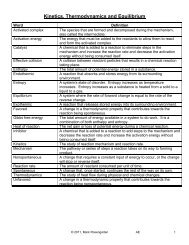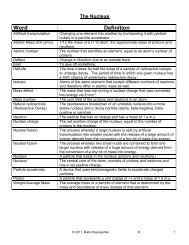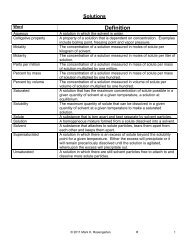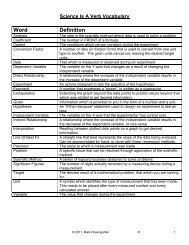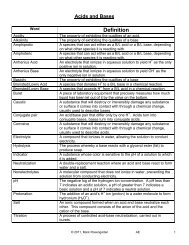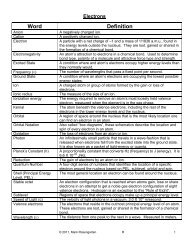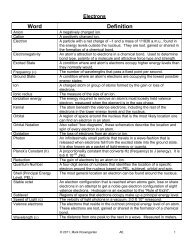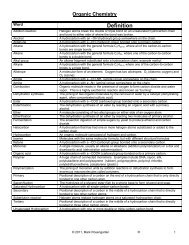Unit 4 - Mark Rosengarten
Unit 4 - Mark Rosengarten
Unit 4 - Mark Rosengarten
Create successful ePaper yourself
Turn your PDF publications into a flip-book with our unique Google optimized e-Paper software.
B) Multiple-Choice Questions: write the answer in the space to the left of each question.<br />
_____1) Which particle is given off by a decaying nucleus of K-37?<br />
a) alpha b) beta c) positron d) gamma<br />
_____2) Which particle has the greatest mass?<br />
a) alpha b) beta c) positron d) gamma<br />
_____3) Which particle can only be stopped by a 1-foot thickness of lead?<br />
a) alpha b) beta c) positron d) gamma<br />
_____4) Which element has no stable isotopes, only having radioactive ones?<br />
a) Si b) Am c) Cu d) C<br />
_____5) Which decay particle will deflect towards a positively charged plate?<br />
a) alpha b) beta c) positron d) gamma<br />
Explain:<br />
_____6) Which particle will, when given off, cause the atomic number of the decaying nucleus to INCREASE<br />
by one?<br />
a) alpha b) beta c) positron d) gamma<br />
Explain:<br />
C) Short-Answer: answer in the spaces provided under each question.<br />
1) You think you have discovered a chunk of radioactive rock. List one way you could check to see if the rock<br />
is radioactive:<br />
2) Radiation kills living cells. Why is it used to treat tumors?<br />
4) Do today’s glow-in-the dark things (like stars you might put on your ceiling) rely on radioactive isotopes to<br />
produce their glow? How can you tell?<br />
© 2011, <strong>Mark</strong> <strong>Rosengarten</strong> AE 22


